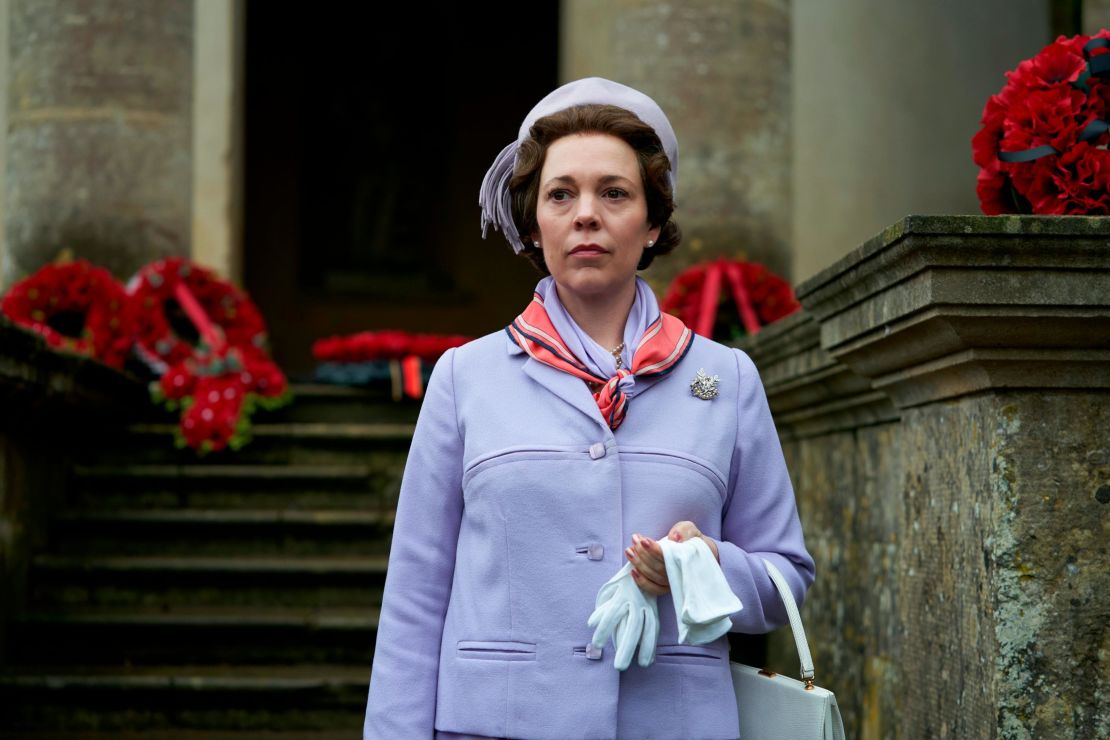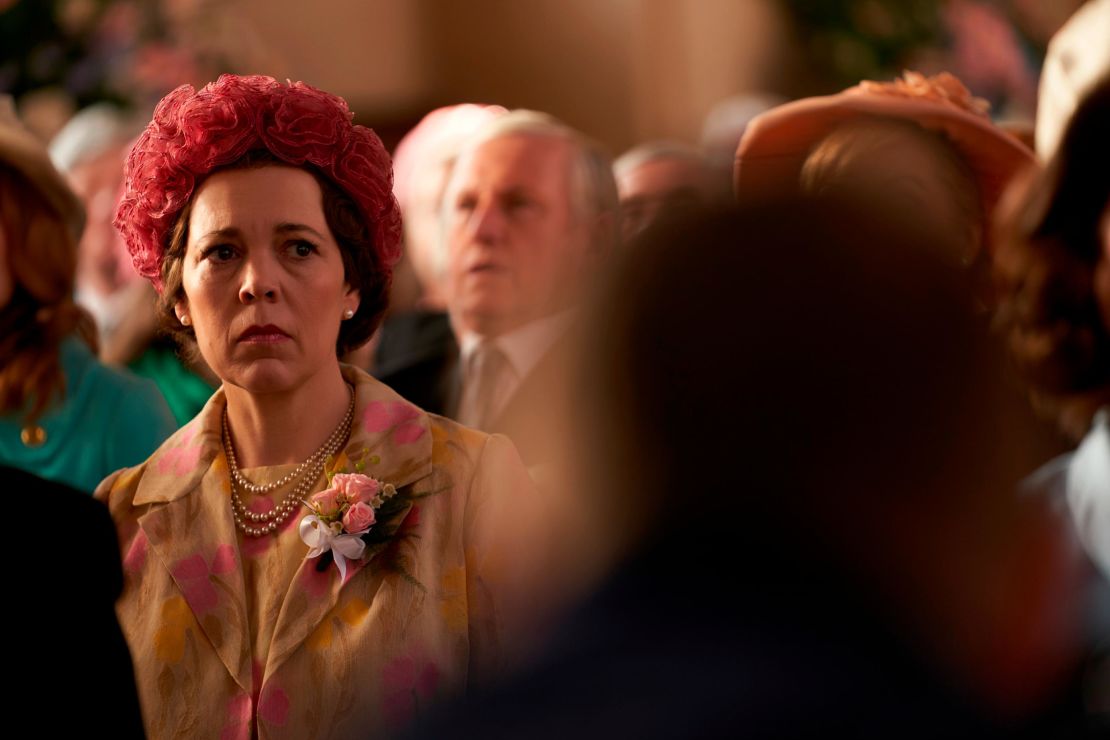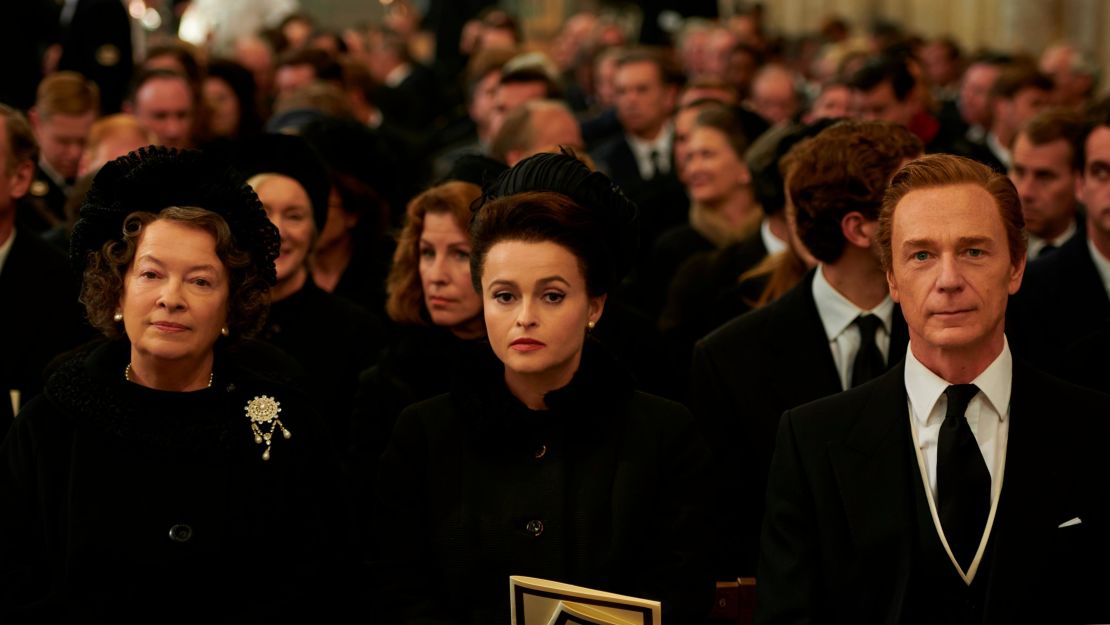Editor’s Note: Kate Maltby is a broadcaster and columnist in the United Kingdom on issues of culture and politics, and a theater critic for The Guardian newspaper. She is also completing a doctorate in Renaissance literature. The views expressed in this commentary are her own. View more opinion articles on CNN.
Please note: the opinion below contains spoilers for Season 3 of “The Crown.”
Period dramas often like to pit female characters against each other. And when Olivia Colman took over the role of Queen Elizabeth II from Claire Foy in the hit Netflix series “The Crown,” the re-casting was inevitably going to invite comparisons between them. Colman was cast in the role before her Best Actress victory at this year’s Oscars, but she was already a major TV star in Britain.

What is a surprise twist, however, is to see showrunner Peter Morgan seize on the real-world contest he has set up between two actresses and make it part of the series’ drama. That’s exactly what happens in the first few minutes of the show’s third season. Forty-five-year-old Colman-as-the-Queen emerges from shadows – where, crowned and bewigged, her silhouette is initially indistinguishable from that of Foy, who played the role while in her early 30s – to inspect a new design of postal stamps bearing the sovereign’s image. On one easel sits the new image: Colman’s own face. On another sits the previous official stamp, ready to be replaced. There, Foy’s youthful photograph stares back at us.
It’s an oddly self-conscious moment – a wink to the audience – in a series usually short on self-knowledge. Much of this series deals with the subject of female aging and its impact: on Elizabeth, her sister, Margaret, and even her mother-in-law, the paranoid schizophrenic Princess Alice. For many British women and Olivia Colman fans worldwide, it has been empowering to see her coming into the prime of her career in middle age, when so many actresses are benched at the first sign of crows’ feet.
The opening moments of that first episode feel almost like a mission statement: “The Crown” is proud to put center stage a female character who is unglamorous, unsexualized and aging into the wallpaper. “Age is rarely kind to anyone,” barks Colman with trademark Windsor stoicism. “Nothing one can do about it. One just has to get on with it.” If only “The Crown” didn’t feel the need to hark on it quite so much. For all these good intentions, it’s still obsessed with picking over the decline of a woman’s body.

Nor is Colman’s Queen much of a success story. In many instances, “The Crown” is right to point out her failures. In 1966, she did indeed hesitate far too long before she agreed to visit Aberfan, the site of national tragedy when 116 young children and 28 adults were killed in the collapse of a coal mining spoil-tip buried a primary school in South Wales. (Many viewers will find this episode deeply distressing.)
She did sanction her family’s disastrous decision to prevent a marriage between Prince Charles and the young Camilla – although in this version of events, because Colman’s Queen believes Camilla to be genuinely in love with her future husband Andrew Parker Bowles, rather than because she shares the Queen Mother’s disapproval of Camilla’s sexual past and commoner status.
“There would always be three people in the marriage,” says Erin Doherty’s Princess Anne of Andrew Parker Bowles and any marriage between Charles and Camilla – a prefigurement of Princess Diana’s famous use of the same phrase. Perhaps in deference to the British heir apparent, “The Crown” writers are over-keen to exonerate Charles from any responsibility himself.
But at times, it seems Peter Morgan’s series is so eager to find the private woman behind the real-world public mystery that he ventures far too deep into historical speculation and psychological fantasy. The suggestion that Elizabeth and Margaret ever attempted a teenage exchange of constitutional roles shows no understanding of Elizabeth’s deep instinct for duty, even in childhood. A personal revelation to Prime Minister Harold Wilson that she has never been able to cry real tears feels unbelievable and intrusive.
Nor is there any evidence that the real-world Queen ever believed rumors that Wilson was himself a Soviet spy. (Even though it gives Colman the excuse for a wonderfully topical line: “I can’t imagine what that would be like. Having a Prime Minister one didn’t trust.” Filming schedules for The Crown mean that it must have been filmed long before current Prime Minister Boris Johnson was found by a UK court to have formally misled the Queen over the prorogation of Parliament – but it is still deliciously apt.)
Eventually, after Aberfan, the Queen does learn to cry. It is a moment of utter cinematic cliché. (A moment of extreme national stereotyping doesn’t help: “You may wish to consider that this is Wales, not England,” Elizabeth’s private secretary reminds her. “A display of emotion would not just be considered appropriate. It’s expected.”) But “The Crown,” especially in this third season, has a tendency to serve up clichés about royalty – especially about female royalty.
In the first episode, the middle-aged Elizabeth Windsor returns to her older male mentor, Winston Churchill, and reminisces gratefully about the wise teachings that allowed her to turn from naïve girl into mature stateswoman. (“You were my guardian angel. The roof over my head. The spine in my back. The iron in my heart. You were the compass that steered and directed me.”) Effective as a relationship model perhaps, if we hadn’t had it recently trotted out in PBS/ITV’s “Victoria” as the format for the relationship between Queen Victoria and her Prime Minister Lord Melbourne. And if it weren’t the blueprint for every film, novel and TV series ever made about Elizabeth Tudor and her chief minister William Cecil.

What saves this season of “The Crown,” as in the first two, is the richness of the cast of actors and the lusciousness of the money-no-object design. Colman, even when handling the weakest scripts, is luminous. If there’s a touch here of some of her previous characters, it’s in her characteristic trick of letting human bitterness, venality or self-pity slip through her teeth for a half-second, every once in a while, before decency, politeness and a desperate, lonely desire to be liked shutter back down over her surface.
To British viewers, Colman is still familiar as Sophie Chapman, the unloved, much-abused on-off girlfriend of one of the two main characters in the dark sitcom “Peep Show.” To her fans, Colman’s emergence as a bigger star than each of the two male leads, David Mitchell and Robert Webb, is a feminist happy ending. (Both Mitchell and Webb are highly talented, well-deserved successes and Webb has written a superb feminist memoir of masculinity. Nonetheless, their career followed a familiar British mold: male-comedy duo; met at Cambridge; landed their own TV show; added a woman as the love interest.)
If there’s a trajectory from Sophie Chapman to Elizabeth Windsor, it’s in Colman’s understanding of the way peculiarly English forms of politeness are used as a weapon by the most miserable of women, or as a defensive armor to superimpose over profound personal pain. Colman’s knack for an earnest formal smile – all teeth, no eyes – is working overtime here.

Tobias Menzies, too, is perfectly cast as Prince Philip, although he appears to be doing an occasionally uncanny voice impression of his predecessor in the role, Matt Smith. Helen Bonham Carter is playing Helena Bonham Carter – which makes her a fine stand-in for Princess Margaret. (Bonham Carter claims to have spoken to a spectral Princess Margaret via a psychic, who told her to “get the smoking right.” If nothing else, she does hold a cigarette holder here at a perfect Margaret angle.)
Samuel West steals the first episode as Anthony Blunt, the real Soviet spy. Emerald Fennell, who appears toward the end of the series as Camilla, perfectly captures her earthy maternalism.
Charles Edwards, one of the best British actors working today, also provides strong support as the Queen’s favorite secretary, Martin Charteris. But his role was played by Henry Hadden-Paton previously, and at times it feels a distraction that The Crown has aged-up the series by recasting not only the leading actors, but even the minor players. Alex Jennings’ Duke of Windsor becomes Derek Jacobi; Will Keane’s Michael Adeane becomes David Rintoul. Greg Wise’s Earl Mountbatten becomes Charles Dance (who is, as ever, playing to type).
It isn’t always necessary visually and adds to the sense of disjunction between this season and the previous two. Only John Lithgow, in a one-episode encore as Winston Churchill, makes a return.
Nonetheless, one remaining constant throughout this series and the last two is Peter Morgan’s innate understanding of the contradictions of the British monarchy. And as Colman grows a little dowdier, a little more domestic, so her Elizabeth Windsor grows more comfortably into the role of constitutional monarch.
In 1559, shortly after her namesake Elizabeth Tudor came to the throne, the loyalist priest John Aylmer wrote a defense of female monarchy, in answer to John Knox’s notorious anti-women pamphlet, “The First Blast of the Trumpet Against the Monstrous Regiment of Women.” Aylmer didn’t dissent from Tudor orthodoxy about conventional gender roles. But in England, Aylmer argued, a woman could rule even while she lacked the dynamism and authority of a man – because England, uniquely, would always be a “mixed” or constitutional monarchy, where a wise (male) House of Commons, House of Lords and Privy Council could guide a monarch and make up for deficiencies.
Get our free weekly newsletter
Aylmer was writing 400 years before the events of “The Crown,” 450 years before our own day. But even today, male royals have chafed harder than women against the limitations of a monarchy that promises power but offers it only indirectly.
Colman’s Queen Elizabeth is conventional enough to accept the gendered expectations of a mid-century British woman and royal enough to seize whatever limited power that offers as her due. Confronting Dance’s Mountbatten over his role in an abortive anti-democratic coup, she bridles at his refusal to “stand by and do nothing” about Prime Minister Wilson’s failures.
Reminding him of the royal family’s role in public life, she tells him: “Doing nothing is exactly what we do. And bide our time.”
This queen does nothing, magnificently.






